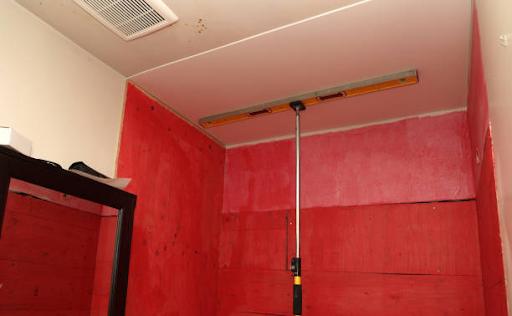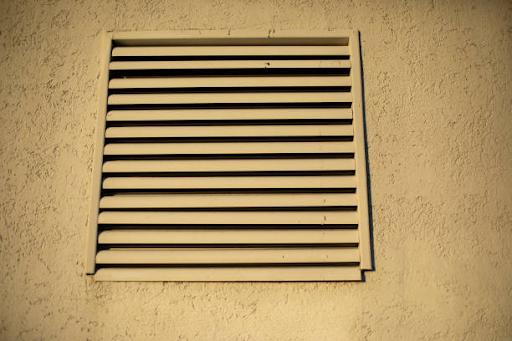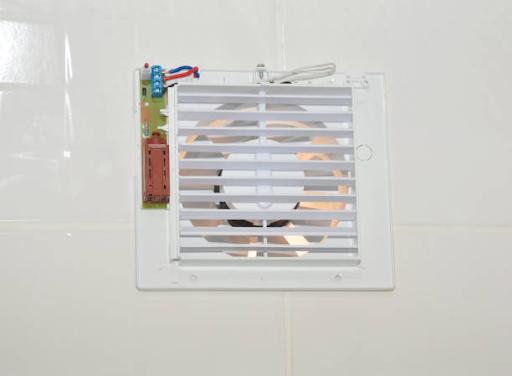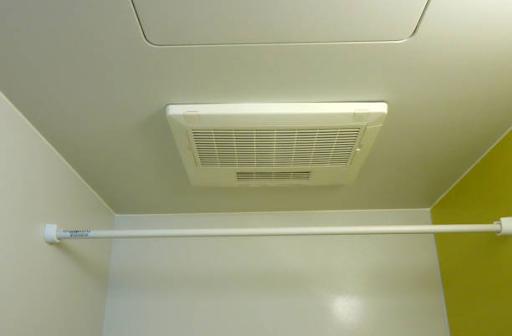Bathroom fans are a very important part of any home’s ventilation system. They help remove moisture, unpleasant odors, and other pollutants that can accumulate in the bathroom. However, when it comes to venting the bathroom fan, many homeowners are uncertain where the exhaust should go.
One option that some people consider is venting the bathroom fan into the attic. While this might seem like a convenient solution, it’s not the best idea. In fact, venting a bathroom fan into the attic can cause a lot of problems that can affect the integrity of your home and even pose serious health risks.
ProTip Takeaway: Venting a bathroom fan into the attic or an interior space such as a wall or ceiling cavity or crawl space is against IRC building codes. This is because it can cause mold to grow and damage the wood structure.
Reasons Why You Should Not Vent Your Bathroom Fan Into The Attic

Bathroom fans are designed in a way that they can remove any excess moisture and smells from the bathroom. These fans need venting to the exterior part of the home because if you vent them into the attic it can cause many problems. Here are some reasons why you should not vent your bathroom fan into the attic:
1. Moisture buildup
The main purpose of a bathroom fan is to remove moisture from the air. If you vent your bathroom fan into the attic, this moisture will accumulate in your attic and can cause mold and mildew growth causing health problems for you and your family.
Over time, the moist warm air will condense, causing the wood and drywall to get wet which can lead to rotting wood and other structural damage.
2. Heat buildup
Bathroom fans generate a lot of heat as they operate. If you vent the fan into your attic, this heat can build up and raise the temperature of your attic. This can lead to higher energy bills and can also cause damage to your roof and shingles.
3. Poor Air Quality
When you vent your bathroom fan into the attic, you will pump moisture and pollutants into your home’s air. This can cause indoor air quality issues, which can be harmful to your health.
4. Building Code Violations
Venting your bathroom fan into the attic is not allowed by building codes in many areas. If you also plan to sell your home, you can run into problems if your home is not up to code.
5. Ice Dams Formation
Bathroom fans can cause ice dams in areas with very cold weather. Ice dams form when the fan’s warm moist air hits the cold wood sheathing. This then causes the snow on your roof to melt and then re-freeze. The result is an ice dam that can damage your roof and even cause leaks.
Alternatives to Venting Bathroom Fan Into Attic
So, if venting your bathroom fan into the attic is not a good idea, what should you do instead?

The best option is to vent your bathroom fan directly to the outside of your home. This can be done through a vent on the roof, exterior wall, or soffit. By venting the fan outside, you will remove moisture, pollutants, and heat from your home, while also preventing structural damage and protecting your indoor air quality.
1. Exterior Wall Ventilation
Venting through the exterior wall is the most popular method used in bathroom fan ventilation. This is because it gives experts more options to route the ductwork from the bathroom.
It also allows the moist air to escape directly out of your home and is the best way to ensure the bathroom exhaust doesn’t have a way to flow back into the attic.
2. Roof Venting
Venting through the roof is another popular option though the roof vent will have to be sealed correctly to prevent roof leaks. Proper ductwork will have to be done to ensure there is enough insulation to prevent condensation in your home.
Roof venting provides a clear path to the exterior and ends on the roof of a home where it’s covered by a hood. These vents are bigger, have a larger vent hood cover, and are more waterproof than exterior wall vents.
3. Exterior Hood Cover
Typically, a vent hood has a little flap that opens when air blows through the vent and remains closed at different times.
The flap helps to prevent outdoor air from going into the home when the bathroom fan is not turned on. The flap and screen are also important as they will prevent birds from nesting in the bathroom vent.
4. Custom Roof Covers
There are different customized roof vent hood covers that are made from metal. These types of covers are stronger and slightly more expensive.
These roof vent covers come with a flapper that stops air infiltration and there is also a screen that keeps out birds and pests.
5. Venting Through the Soffit
Venting through the soffit is the least wanted option and one that can violate building codes in your region. It can easily cause moisture problems in your home because they pull outside air into the attic.
With soffit vents, the exhaust air is picked up and flown back into the attic. In return, there will be increased humidity in the attic which will lead to mold and mildew growth.
ProTip Takeaway: If you are not sure about how to properly vent your bathroom fan, it’s best to consult with a professional. An HVAC technician or a licensed contractor can help you determine the best solution for your home and ensure that your bathroom fan is properly installed and vented.
Ways To Stop Condensation When Venting Into Attics
In most cases, a bathroom vent will be installed horizontally in the attic. This means there is a risk of condensation or water droplets even if the vent ends on the outside. The best way to prevent condensation is to install an insulated bathroom vent which is just a normal vent that is surrounded by fiberglass insulation.
An insulated bathroom vent helps to reduce condensation which can lead to mold or mildew problems as well as damage to the drywall.
How Much Will It Cost To Install An Exhaust Vent?

As stated, exhaust vents should be vented directly to the outside of the house. If you’re considering venting into the attic to save money, it can end up costing you more in the long run because of the potential damage to your home and increased energy costs.
The cost of installing an exhaust vent or rerouting a vent can vary depending on several factors, including the type of vent and the complexity of the installation.
Here are some general cost estimates:
Labor | Installing a new vent can cost on the low end around $200 just for labor, and can go as high as $500 to $750. |
Bathroom exhaust fan | The cost of installing a bathroom exhaust fan can range from $200 to $800 |
Roof vent | Installing a roof vent can cost anywhere from $300 to $1,000. |
Soffit vent | Installing aoffit vent can cost anywhere from $150 to $500, |
Can I Vent a Bathroom with No Window or Outside Access?
If you have a bathroom with no window or outside access, it is still possible to ventilate it properly by using a combination of mechanical ventilation and air circulation.
- Install a bathroom fan with a carbon filter. A ventless bathroom fan will recirculate the bathroom air and filter out any pollutants. These types of fans have an activated-charcoal filter that has to be replaced every 6 months.
- Install a bathroom exhaust fan. A bathroom exhaust fan can help remove excess moisture and odors from the air. It should be installed as close to the shower or tub as possible and vented to the outside of the house through the roof or wall. If there is no existing vent, you might need to hire a professional to install one.
- Keep the bathroom door open. Keeping the bathroom door open can help promote air circulation and prevent moisture buildup.
- Use a dehumidifier. A dehumidifier can help remove excess moisture from the air and prevent mold and mildew growth. You can place a portable dehumidifier in the bathroom or have a whole-house dehumidifier installed by a professional.
- Use a bathroom fan timer. A bathroom fan timer can help ensure the exhaust fan runs for enough time to remove excess moisture from the air. You can set it to run for a set amount of time after you leave the bathroom.
- Use mold-resistant paint: Using mold-resistant paint on the bathroom walls can help prevent mold growth and improve air quality.
Are You Ready To Vent Your Bathroom?
Whether you need to reroute a bathroom fan that has been fitted to the attic or get proper aeration for your bathroom, we are the right people to call. Smart Remodeling LLC is the best in all home remodeling projects. Contact us to get a free quotation from the best services in your area today.






